Lucia Lee
Last update: 03/10/2025
How you price your products can make or break your ecommerce success. You don’t want to set it too high as you risk losing customers to competitors, but you don’t want to set it too low either as your margins may vanish. Striking that delicate balance is no easy task, but dynamic pricing in ecommerce offers a smarter way to hit the sweet spot. Keep reading to explore how this strategy works, and why it is replacing the traditional fixed pricing approach to become a core driver of sales growth and competitiveness.
Dynamic pricing is a flexible pricing strategy that adjusts the cost of products in real time based on factors like market conditions, demand levels, competitor activity, customer behavior, and even inventory status.
Unlike traditional static pricing - where prices remain fixed for weeks or months - dynamic pricing allows businesses to respond quickly to external changes. For example, if demand for a product spikes or a competitor drops their price, your own prices can be updated instantly to stay competitive while still maximizing profit margins.
Dynamic pricing vs. Personalized pricing
When it comes to pricing strategies, some people confuse dynamic pricing with personalized pricing. While both involve flexibility, they operate in different ways - and understanding the difference is important if you are considering pricing strategies for your business.
Dynamic pricing bases adjustments on broad, external factors like market demand or competitor actions, applying changes equally to all shoppers at a given moment. Personalized pricing, on the other hand, tailors prices to individual customers based on their personal data and past shopping behavior. In short, personalized pricing deals with prices on a personal level, while dynamic pricing adjusts prices for broader customer segments.
Also read: Personalization in Ecommerce: Benefits, Examples, and More
While dynamic pricing is flexible in nature, it doesn’t happen just by accident. It's a structured process powered by AI retail technology, automation, and pricing algorithms. Below is a breakdown of how dynamic pricing in ecommerce works behind the scenes:
Data collection
Dynamic pricing starts with gathering vast amounts of information, including product availability, shipping costs, competitor prices, historical sales, and even customer interactions like clicks or cart abandonments. This provides the foundation for accurate competitive analysis and market insights.
Information organization
Once collected, the data is organized into actionable sets. The system accounts for contribution margins, inventory levels, and psychological pricing tactics. This stage sets the rules for price optimization, ensuring adjustments align with your business goals.
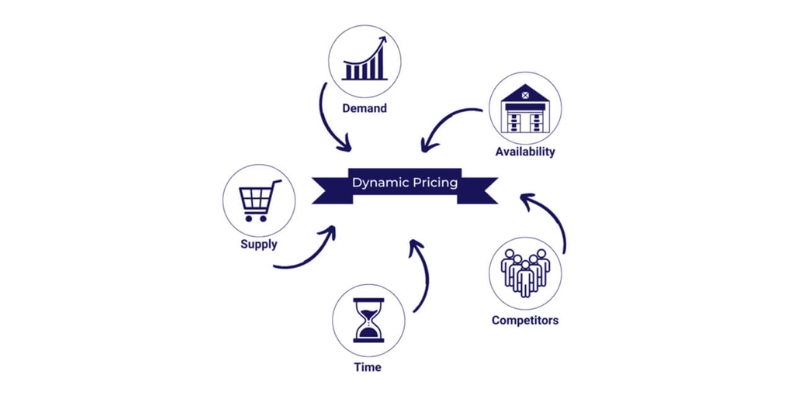
Information organization
Algorithmic pricing in action
At this stage, pricing algorithms powered by AI and machine learning process the organized data. They evaluate factors like market demand, consumer behavior, and seasonal trends, then apply real-time pricing adjustments. For example, a sudden spike in demand for a trending product could trigger an automatic price increase.
Predictive forecasting
Beyond reacting in the moment, dynamic pricing systems use predictive models to forecast future scenarios. This involves analyzing price elasticity - how sensitive customers are to price changes - and anticipating demand fluctuations. Businesses can proactively adapt their sales strategy instead of just responding to shifts.
Continuous monitoring & adjustment
Dynamic pricing is never “set and forget.” Algorithms continuously monitor external and internal factors, from competitor moves to customer browsing patterns. Prices are recalculated in real time, ensuring the business stays competitive while protecting profitability.
For ecommerce businesses, every pricing decision matters. Dynamic pricing gives you the agility to respond to real-time changes in demand, competition, and inventory. There are various reasons why you should consider this pricing strategy:
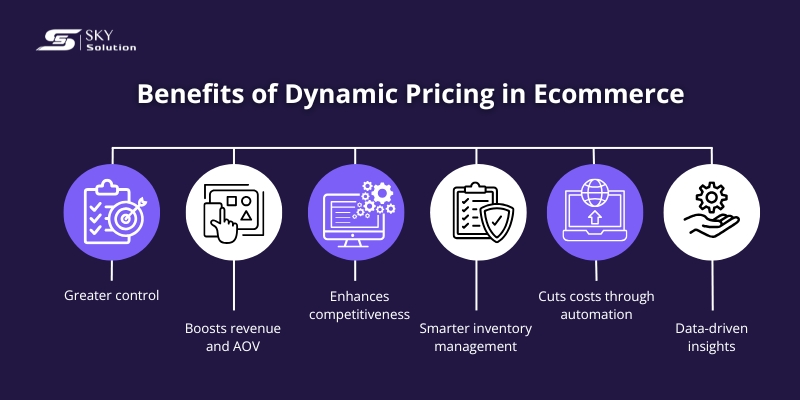
Benefits of dynamic pricing in ecommerce
Greater control over your pricing strategy
Contrary to the idea that dynamic pricing takes control away, it actually gives businesses more power. By monitoring real-time trends, supply-and-demand shifts, and competitor prices, you can adjust your pricing strategy whenever needed. This flexibility ensures you’re always setting the right price at the right time, so you can maximize revenue without losing sight of customer expectations.
Boosts revenue and average order value
Dynamic pricing in ecommerce helps you align prices with current demand and inventory levels, which can optimize conversions and profit margins. Whether it’s capitalizing on peak sales periods or responding to slower demand by adjusting prices downward, this strategy helps maintain steady cash flow. Some retailers even report noticeable increases in average order value during seasonal spikes when dynamic pricing is in play.
Enhances competitiveness
In today’s crowded ecommerce landscape, customers can compare prices in seconds. Dynamic pricing gives you the edge by enabling proactive, data-driven price changes that keep your brand competitive. Instead of constantly reacting to competitors, you can lead with strategic adjustments that meet market expectations and win over price-sensitive customers without resorting to blanket discounts.
Supports smarter inventory management
Managing stock effectively is one of the hidden strengths of dynamic pricing in ecommerce. When demand is low, discounts can help move slow-selling items, reducing overstock and storage costs. On the flip side, when inventory is tight, slightly raising prices can prevent stockouts and keep supply consistent. This balance not only saves costs but also ensures smoother operations across your supply chain.
Cuts costs through automation
Dynamic pricing software automates what would otherwise be a tedious manual process - tracking competitors, analyzing trends, and adjusting thousands of SKUs. This saves time, reduces human error, and lowers overhead costs. With automation handling complex calculations, businesses can reallocate resources toward strategy, marketing, and growth initiatives.
Unlocks data-driven insights
Beyond immediate sales benefits, dynamic pricing in ecommerce provides a wealth of valuable data. By analyzing customer behavior, demand patterns, and competitor moves, you gain insights that can shape future strategies. From refining product mixes to designing more targeted promotions, these insights allow you to not just sell more, but sell smarter.
Dynamic pricing in ecommerce takes many different forms, and understanding them is key to finding the right fit for your business. Let’s take a closer look at the most common strategies and how they work in practice.
Demand-based pricing
One of the most widely used strategies is demand-based pricing, where prices fluctuate depending on how popular an item is at any given moment. When a product is trending, selling quickly, or gaining visibility from social media or influencer mentions, the system automatically raises prices to reflect this surge in demand. On the flip side, when interest slows down, prices can be adjusted downward to encourage more sales. This approach helps businesses maximize revenue during peak times while keeping inventory moving during slower periods.
Time-based pricing
Another common method is time-based pricing, where prices change according to specific time windows, such as the time of day, day of the week, or particular events. This tactic taps into urgency and customer psychology, often through flash sales, early-bird discounts, or end-of-day markdowns. By creating a sense of urgency, time-based pricing not only drives conversions but also builds anticipation among customers who look forward to recurring sales events.

Time-based pricing
Competitor-based pricing
For businesses in highly competitive industries, competitor-based pricing is especially effective. This strategy involves adjusting your prices in response to what competitors are charging for the same or similar products. This ensures customers see your brand as a competitive option while protecting your bottom line.
Penetration pricing
On the other end of the spectrum of dynamic pricing in ecommerce, penetration pricing takes the opposite approach: setting prices lower than competitors to quickly capture market share and attract new customers. This strategy works particularly well for businesses entering a new market or launching a new product, as it lowers the barrier to entry and encourages trial. Once customers are onboard and loyalty is established, prices can gradually increase to more sustainable levels.
Inventory-led pricing
Inventory-led pricing focuses on stock levels as the main trigger for price changes. If a product is overstocked, businesses lower prices to encourage clearance and free up storage space. On the other hand, if an item is selling out quickly and inventory is running low, prices can rise slightly to protect margins and balance demand.
Also read: AI in Inventory Management for Smart Inventory Control
Customer segment-based pricing
Segment-based pricing, also called price differentiation, involves tailoring prices to specific customer groups. Businesses may offer special deals for first-time shoppers, loyalty rewards for long-term customers, or even region-based pricing for global audiences. By catering to different segments, businesses can not only increase revenue but also build stronger customer loyalty.
Peak pricing
Peak pricing, sometimes called demand surcharging, is all about capitalizing on high-demand periods such as holidays, special events, or seasonal peaks. During these times, customers are often more willing to pay higher prices, and businesses can use this to maximize revenue. Hotels and airlines are classic examples, charging more during Christmas or long weekends. But e-commerce brands can also benefit by raising prices slightly during Black Friday or major product launches.
Auction-based pricing
Finally, there’s auction-based pricing, where the market itself determines the value of a product through bidding. In this model, prices are highly fluid, shifting in real time based on demand and customer willingness to pay. Online auction platforms are the most common example, but even e-commerce brands selling limited-edition products can use this strategy to create excitement and maximize revenue. Since buyers set the final price, auction-based pricing can often yield higher-than-expected returns for scarce or highly desirable items.
Dynamic pricing in ecommerce isn’t just a theory - it’s already shaping how the biggest names in ecommerce operate every day. Let’s look at two real-world examples that show how powerful this strategy can be.
Amazon: The benchmark for real-time pricing
Amazon has become the gold standard for dynamic pricing in ecommerce, with millions of price changes happening across its platform every single day. Prices shift in real time based on competitor activity, customer demand, inventory levels, time of day, and even location.
For example, if a competitor cuts the price of a kitchen appliance, Amazon’s algorithms can respond almost instantly - lowering its own price just enough to stay competitive while still protecting margin. On the flip side, when inventory runs low on a trending product, Amazon may nudge prices upward to balance supply and demand. This constant fine-tuning helps the company maintain its reputation for value while extracting maximum revenue across its vast catalog.
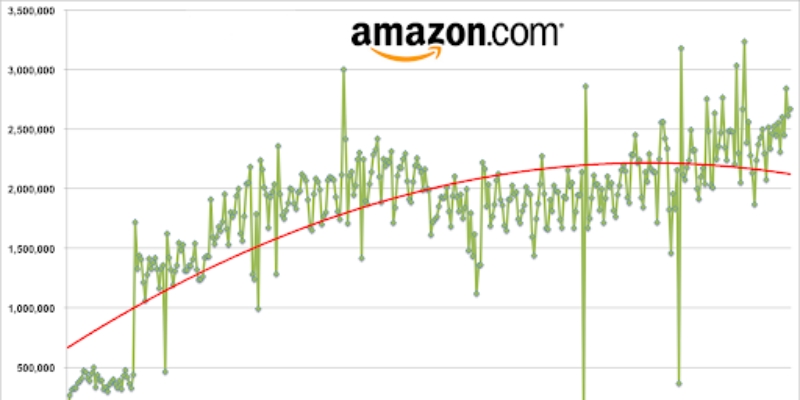
Amazon: The benchmark for real-time pricing
Zara: Time and inventory-based flash discounts
Zara takes a different approach, using dynamic pricing to refine its clearance and sales cycles. Instead of applying blanket discounts across the store, Zara’s system adjusts prices based on stock levels, time of season, and sell-through rates. For instance, if a particular size or color of a jacket isn’t selling, the price might drop significantly to encourage faster turnover. Meanwhile, best-selling items hold their price until demand naturally tapers off. This targeted discounting strategy avoids unnecessary margin loss while ensuring slow-moving inventory doesn’t pile up.
Dynamic pricing isn’t something you can just “switch on.” To make it effective, it needs to be part of a larger pricing approach focused on optimization, data-driven rules, and continuous refinement. Don’t know how to get started? Here’s a clear roadmap for putting it into action.
Define your pricing goals
Every successful dynamic pricing journey begins with clear objectives. Are you aiming to maximize profit margins, move excess stock, or position yourself as the most affordable brand in your category? These goals act as your compass, guiding every decision that follows. Without them, it’s easy to lose focus or misalign pricing with your broader business strategy.
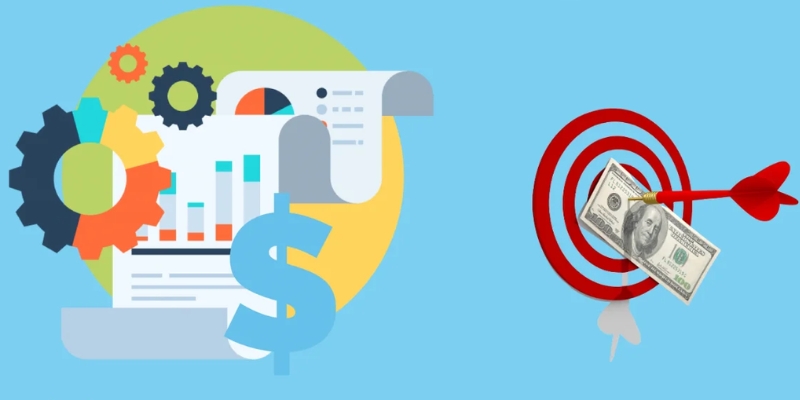
Define your pricing goals
Understand your pricing factors
Next, take a deep dive into what influences your customers’ willingness to pay. Factors might include seasonality, time of day, income levels, perceived product value, or even competitor promotions. Data analysis plays a huge role here - studying past sales trends, conversion rates, and customer behavior helps you pinpoint the exact triggers that should influence pricing changes. This stage is about uncovering the “why” behind purchase decisions so you can use it to your advantage.
Build your pricing strategy framework
Once you know your goals and influencing factors, it’s time to craft a framework. This step ensures all stakeholders are aligned and working from the same playbook.
Start by assessing your current pricing model - where do you stand in the market? Are you leading, following, or trying to disrupt? Gather input from sales, marketing, and finance teams to outline a strategy that supports your business objectives. The framework should cover how aggressive you’ll be with discounts, how closely you’ll track competitors, and what balance you want between margin and market share.
Set rules and parameters
Dynamic pricing in ecommerce only works when you give the system clear rules to follow. This means defining the conditions that trigger price increases or decreases. For example, you might raise prices when inventory drops below 10 units or lower them when a product hasn’t sold in a week. Rules should always reflect your business model, protecting you from costly outcomes like stockouts, overstocking, or selling at a loss.
Choose the right pricing methods
Dynamic pricing isn’t one-size-fits-all - it’s about selecting the methods that fit your market. Whether you use demand-based pricing, competitor-based adjustments, or customer-segmented approaches, each method should map directly back to your goals and framework. For instance, a marketplace competing on price might lean heavily on competitor tracking, while a fashion retailer might emphasize time- and inventory-based adjustments to balance stock levels with sales momentum.
Test, monitor, and optimize
Finally, dynamic pricing in ecommerce is never “done.” It’s a cycle of monitoring, evaluating, and refining. Regularly review whether your strategy is leading to higher margins, better inventory balance, and stronger customer satisfaction. If the results aren’t where you want them to be, adjust the rules, tweak the parameters, or even shift back to a simpler model temporarily. The most successful businesses treat dynamic pricing as a living system - one that evolves alongside customer behavior, market changes, and business priorities.
While dynamic pricing in ecommerce brings about various benefits, it also comes with some challenges that you need to take into consideration. Here are the biggest hurdles brands face when rolling out dynamic pricing.
Customer perception and trust
One of the toughest challenges is how customers perceive shifting prices. If shoppers notice that prices vary dramatically from day to day, device to device, or person to person, it can feel unfair or manipulative. Imagine paying full price for a product, only to discover it was significantly cheaper the next morning - this frustration can quickly damage loyalty.
Risk of price wars
In industries where competitors are just a click away, dynamic pricing can unintentionally spark a race to the bottom. Constantly lowering prices to stay competitive may temporarily drive sales, but it also squeezes profit margins and can reduce the perceived value of your products. This is especially dangerous for smaller businesses that lack the financial cushion of bigger players.
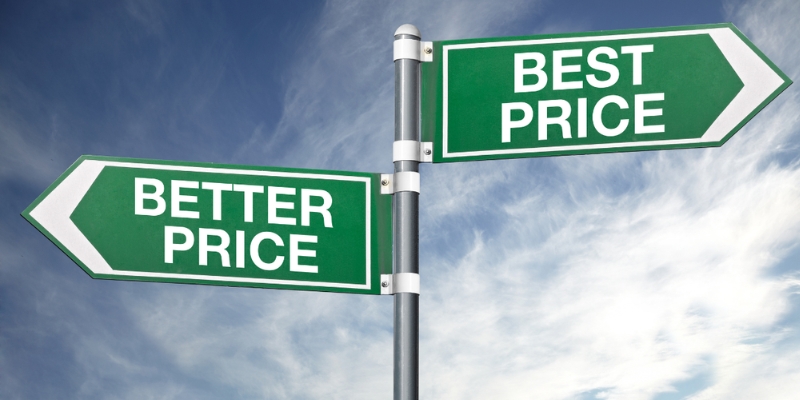
Risk of price wars
Technical complexity
Dynamic pricing in ecommerce isn’t as simple as flipping a switch. It requires pulling together data from multiple sources and then syncing that information across every sales channel. Without a robust system, errors can occur, creating inconsistent prices or customer confusion. Smaller businesses in particular may struggle with the cost and complexity of the technology involved.
Legal and ethical concerns
Not all dynamic pricing tactics are viewed equally in the eyes of the law - or by the public. Charging customers different prices based on factors like location, browsing history, or device type can raise questions about fairness and even breach regulations in certain markets. Beyond legal compliance, there are ethical considerations: price surges during emergencies, for example, may be seen as exploitation or price gouging.
Businesses must tread carefully here by personalizing offers through discounts or bundles, rather than varying base prices in ways that appear discriminatory. Transparent, customer-first practices are the safest way to build long-term trust.
Inconsistent customer experience across channels
Another challenge arises when pricing isn’t aligned across web, mobile, and third-party marketplaces. A customer who sees one price on their phone but another on their laptop is likely to feel confused or even deceived. This inconsistency can disrupt the shopping journey and damage credibility.
To prevent this, businesses should centralize pricing logic and ensure all sales channels pull from the same source of truth. Consistency, both in pricing and messaging, is critical to creating a seamless experience that customers can rely on.
Impact on customer loyalty
Finally, even when executed correctly, dynamic pricing can still alter customer behavior in unintended ways. Shoppers who realize prices fluctuate may start delaying purchases, waiting for better deals, or comparing across multiple stores before buying. Some may even abandon your brand in favor of competitors with fixed, predictable pricing.
To counter this, businesses need to balance dynamic pricing in ecommerce with strong loyalty initiatives - such as rewards programs, exclusive offers, or frictionless customer experiences. If customers feel valued beyond just price, they’re far more likely to stick around.
The future of dynamic pricing in ecommerce is set to be shaped by AI at an even deeper level, turning what used to be reactive adjustments into proactive, real-time optimization. Here’s what the future holds for AI in ecommerce pricing:
Predictive demand-based pricing
One of the most promising applications is predictive pricing powered by advanced AI models. These systems can forecast spikes or drops in demand by analyzing historical data, real-time shopping behavior, and external signals such as seasonal trends or cultural events. By anticipating demand before it happens, retailers can adjust pricing and inventory levels accordingly, capturing maximum value during high-demand periods and avoiding losses when interest wanes.
Competitive intelligence automation
Another major shift lies in competitive intelligence. Instead of simply matching a rival’s price, AI systems will continuously scan the market, evaluating thousands of competitor SKUs in real time. The difference is that these tools don’t just copy - they analyze gaps, patterns, and value propositions to adjust pricing strategically.
For example, if a competitor discounts a product heavily, the system might lower prices slightly to remain attractive without eroding margins. On the flip side, if competitors lean toward premium positioning, AI can emphasize value and brand differentiation rather than racing to the bottom. This level of automated decision-making will allow businesses to stay competitive without constantly burning resources on manual monitoring.
Omnichannel price integrity
As businesses scale across multiple sales channels - from marketplaces like Amazon and eBay to direct-to-consumer websites and even physical stores - maintaining pricing consistency becomes increasingly complex. AI-driven optimization offers a solution by ensuring coherent, real-time pricing across all touchpoints while still allowing for channel-specific adjustments. For instance, a retailer could keep consistent baseline prices across platforms while using AI to introduce dynamic promotions tailored to a specific marketplace audience. This balance between price integrity and flexibility will be critical to building customer trust and protecting brand reputation in a fragmented retail landscape.
Dynamic pricing in ecommerce is no longer a futuristic concept - it’s the reality shaping how businesses compete and grow in today’s digital marketplace. By leveraging data, automation, and real-time insights, ecommerce brands can strike the right balance between competitiveness and profitability.
At Sky Solution, we help ecommerce businesses unlock the full potential of dynamic pricing with tailored solutions that drive sales and long-term growth. Ready to future-proof your online store? Let’s build your pricing advantage today. Contact us now for a free consultation!